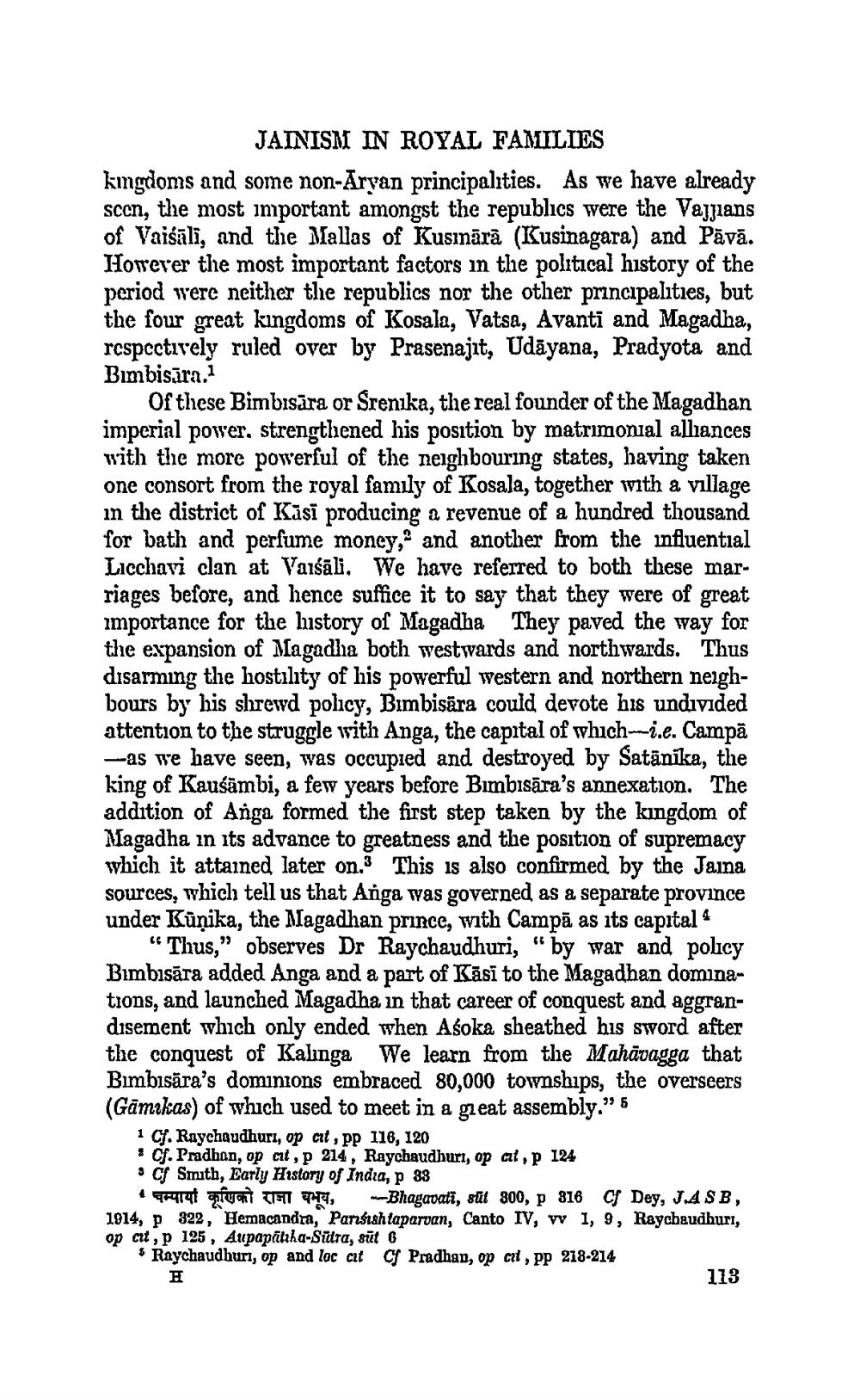________________ JAINISM IN ROYAL FAMILIES kmgdoms and some non-Arvan principalities. As we have already scen, the most important amongst the republics were the Vajjians of Vaisali, and the Mallas of Kusinara (Kusinagara) and Pava. Hotever the most important factors in the political history of the period were neither the republics nor the other principalities, but the four great kingdoms of Kosala, Vatsa, Avanti and Magadha, respectively ruled over by Prasenajit, Udayana, Pradyota and Bimbisura.1 Of these Bimbisara or Srenika, the real founder of the Magadhan imperial power, strengthened his position by matrimonial alliances with the more powerful of the neighbouring states, having taken one consort from the royal family of Kosala, together with a village in the district of Kusi producing a revenue of a hundred thousand for bath and perfume money, and another from the influential Licchavi clan at Vaisali. We have referred to both these marriages before, and hence suffice it to say that they were of great importance for the lustory of Magadha They paved the way for the expansion of Magadha both westwards and northwards. Thus disarming the hostility of his powerful western and northern neighbours by his shrewd policy, Bimbisara could devote his undivided attention to the struggle with Anga, the capital of which-.e. Campa -as we have seen, was occupied and destroyed by Satanika, the king of Kausambi, a few years before Bimbisara's annexation. The addition of Anga formed the first step taken by the kingdom of Magadha in its advance to greatness and the position of supremacy which it attained later on. This is also confirmed by the Jaina sources, which tell us that Arga was governed as a separate province under Kunika, the Magadhan prince, with Campa as its capital "Thus," observes Dr Raychaudhuri, "by war and policy Bimbisara added Anga and a part of Kasi to the Magadhan dominatrons, and launched Magadha in that career of conquest and aggrandisement which only ended when Asoka sheathed his sword after the conquest of Kalinga We learn from the Mahavagga that Bimbisara's dominions embraced 80,000 townships, the overseers (Gamakas) of which used to meet in a great assembly." 5 1 Cf. Raychaudhuri, op czl, pp 116, 120 . Cf. Pradhan, op cit, p 214, Raychaudhuri, op al, p 124 * Cf Smouth, Early History of India, P 89 +944147 quan T T --Bhagavati, sut 800, p 816 Cf Dey, J.ASB, 1914, p 322, Hemacandra, Parfish taparuan, Canto IV, Y I, 9, Raychaudhuri, op cit, P 125 , Aupapitiha-Sidra, suto Raychaudhuri, op and loc ct Cy Pradhan, op cit, pp 218-214 113




